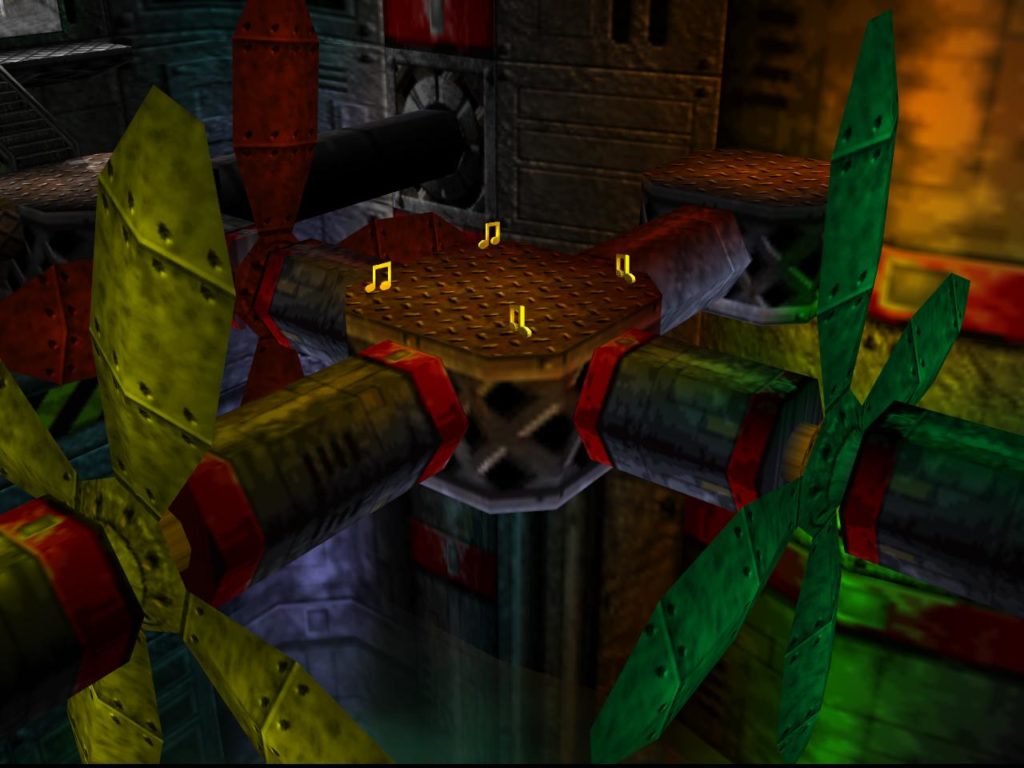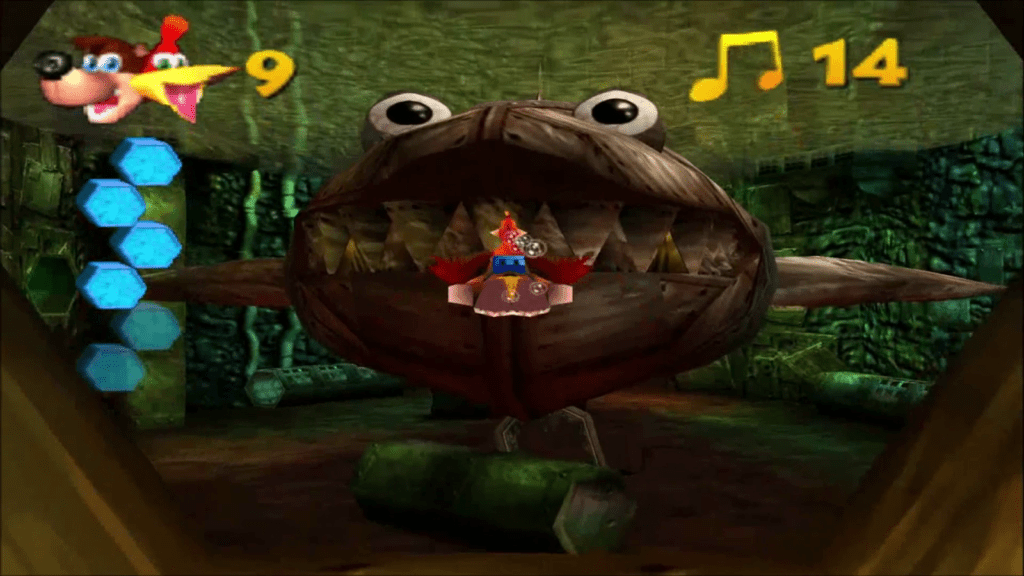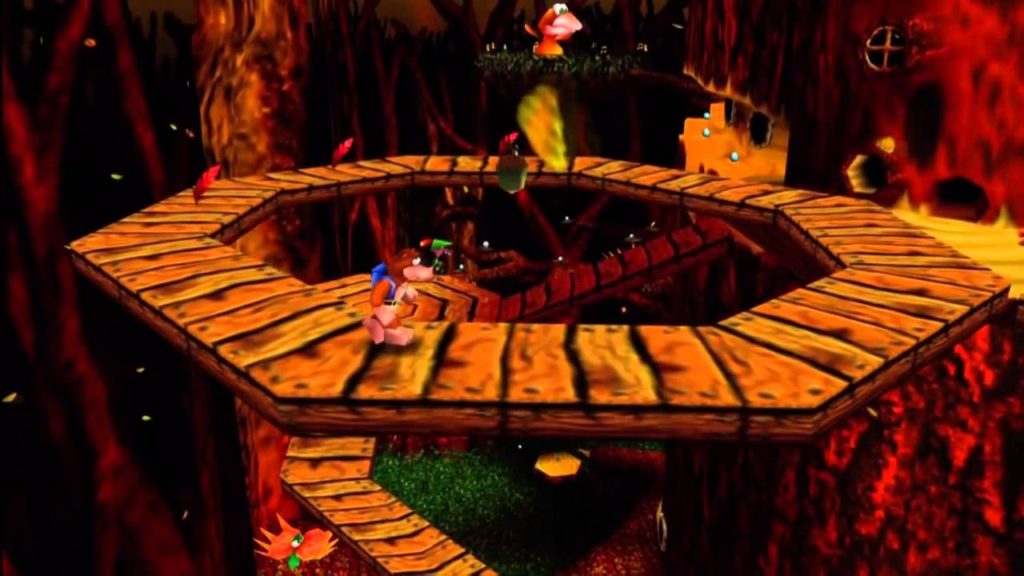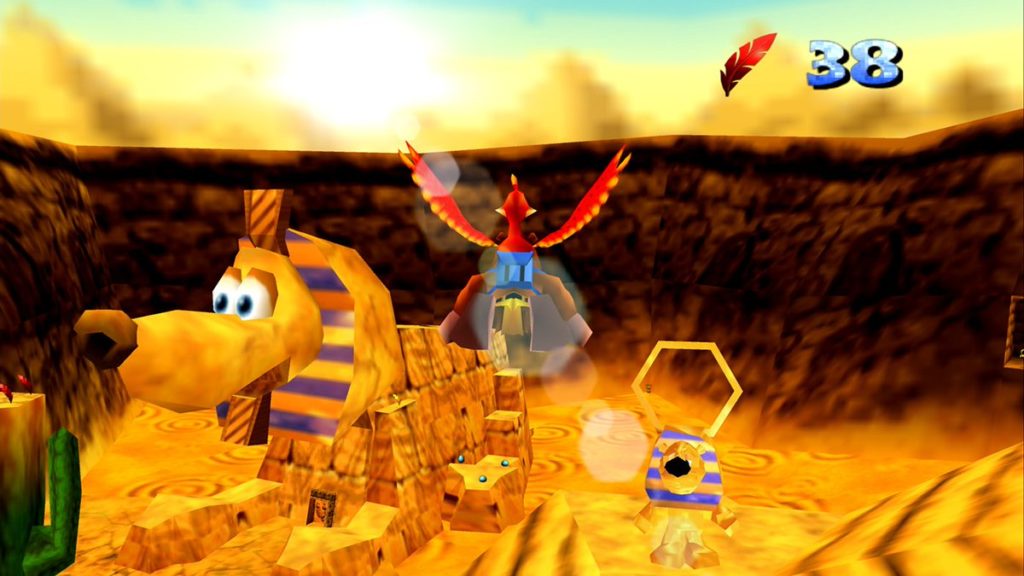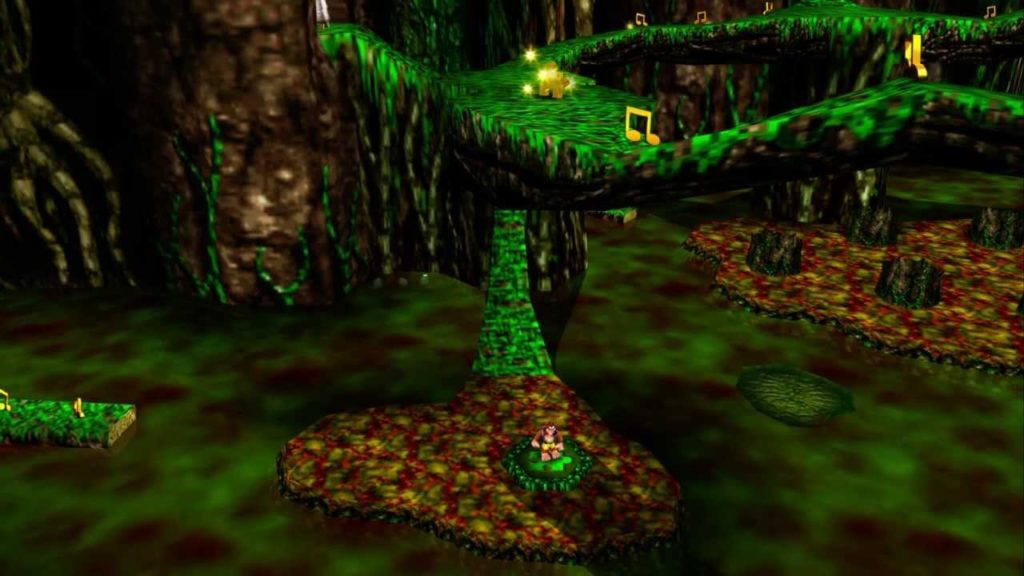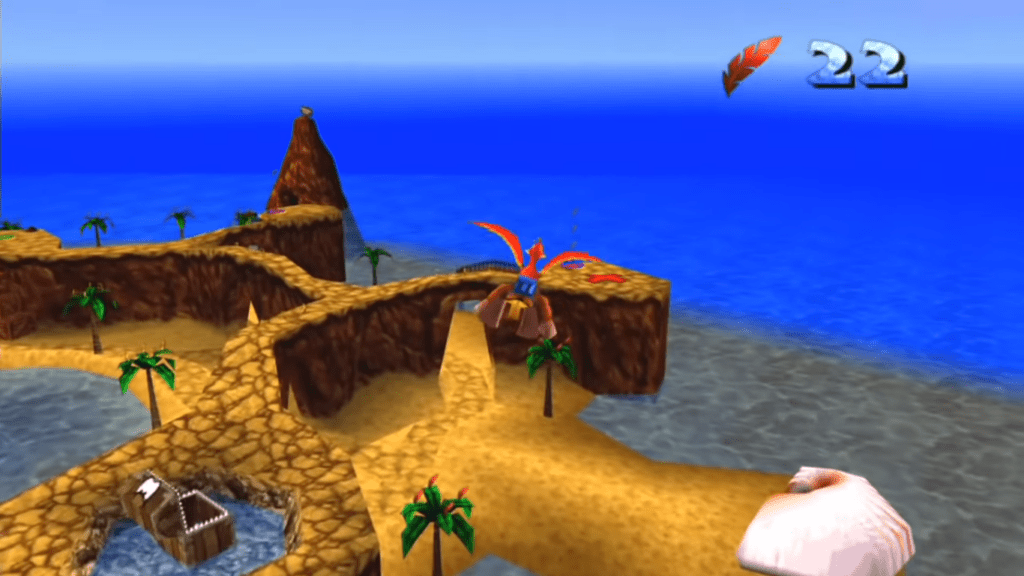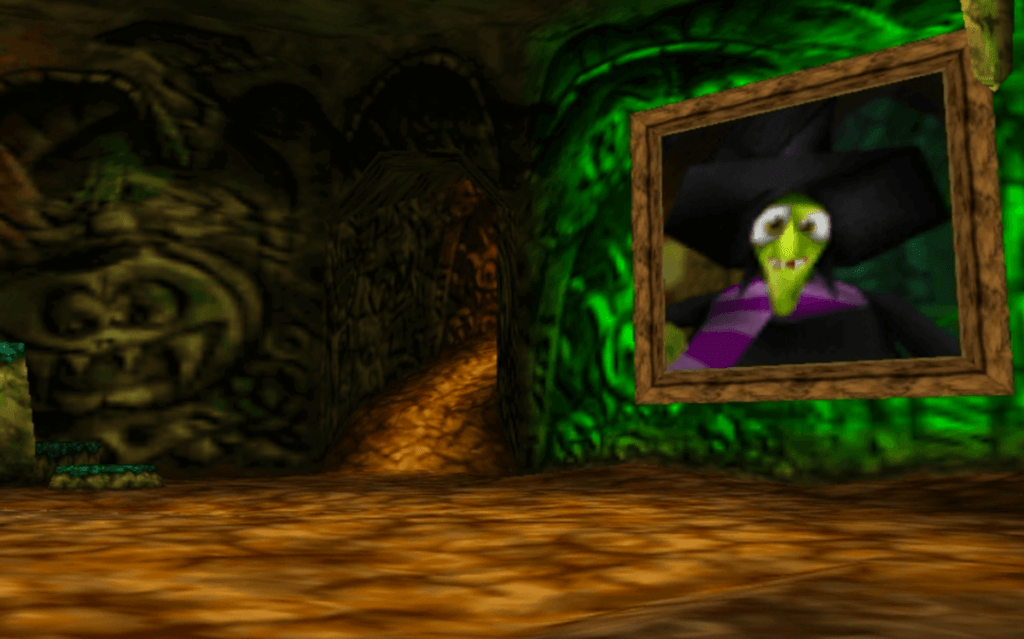-Gruntilda
I’ve always been a little…bitter, that Nintendo never kept Rare on board – not only are Rare a UK company and therefore close to home, but they’re responsible for some of the best titles on the SNES, N64 and GameCube. Rare worked with Nintendo from the mid-’90s, but in the millennium, game development surged dramatically in cost and (to many people’s surprise) Nintendo didn’t increase funds to cover the new expenses, or just buy the studio outright. With a lack of funding, Rare decided to look for new investment, and so they ended up partnering with Microsoft.
Rare hit the road and took all their IPs with them (oh how I miss Conker), but did leave some historical gems on the aforementioned consoles. Games like Donkey Kong Country, GoldenEye 007 and Star Fox Adventures are regarded as some of the best games on their respective platforms. For me, I first encountered Rare studios with Diddy Kong Racing on the N64, but perhaps my favourite Rare game is Banjo-Kazooie. A platforming adventure, Banjo-Kazooie is a comical story of a Bear/Bird combo trying to rescue Banjo’s sister Tooty from a maniacal, rhyming Witch tyrant. Playing it back, it’s funny how many ideas from Banjo-Kazooie have been borrowed and exacerbated in Super Mario Odyssey. Whether it’s the open-world aspect of collecting as many Jiggies (Jigsaw pieces) until your furry heart’s content or the shape-shifting through the shaman Mumbo Jumbo, Odyssey seems to have been inspired by this solid 90’s epic.
Much like Odyssey, it’s the worlds of Banjo-Kazooie that are the playgrounds for this gameplay to shine brightly. Sweeter than a hive of honey, each world is packed with personality which is executed beyond perfection when you consider the hardware limitations of the N64. Banjo and Kazooie’s hugely varied movepool also allows each world to remain creative with their landscapes – the motley of platforming sections and combinations means it never feels like you’re retreading old ground throughout their Witch hunt. Technically there are only 9 worlds in Banjo-Kazooie, so I’ve thrown in the hub world (which does have platforming and puzzle elements) to hit the magic 10 – check it out below!
Did You Know?
- Released in 1998 on the N64.
- 10th most popular N64 game, selling 3.5 million units.
- Grunty doesn’t rhyme in the Japanese version!

10) Rusty Bucket Bay
Yuck. Let’s get this over and done with. Anyone who’s played Banjo-Kazooie will (hopefully) share my pain for Rusty Bucket Bay. If you’re sitting there thinking “Rusty Bucket Bay was fun – what’s nin10dave on about?”, then I suggest you seek immediate psychiatric attention. OK, a bit extreme, Rusty Bucket Bay does have some great parts – in fact – I’m quite fond of the rusted central ship and the different paths you can take both on and off the ship from the surrounding walls and warehouses. But all this fun is tainted, and completely destroyed, by the nefarious engine room. Platforming on older consoles can feel a little “clunky” by today’s standards, which is bad when this is combined with super-precise platforming moments. This deadly cocktail is nowhere more apparent in the game than in said engine room, which is complete with spinning rotor blades, bevelled pipes and sharp-angled rotating pathways. There’s no ground, so fall off – which absolutely will happen to you more than once – and you’ll need to start the platforming, and note-collecting, all over again. It’s a shame as I recently learned this room was only created for a promo poster (that barely shows the infuriating engine room!) but unfortunately the single, massive con of this world outweighs the many pros.
9) Gruntilda’s Lair
The hub world of Banjo-Kazooie, Gruntilda’s Lair acts as the central nervous system linking up all the different worlds but is packed full of secrets and shortcuts for you to discover. There are “Witch Switches” in each of the 9 worlds that place a Jiggie in Gruntilda’s Lair for you to then go and collect. These usually require one of the moves you learn throughout the game, combined with timing challenges or Mumbo’s shape-shifting magic. What I particularly love about Grunty’s Lair is its sporadic labyrinth-like nature. One moment you’re in a Springtime country-esque themed room, and going through a nearby door puts Banjo suddenly underwater in what looks like a dank, underground cave. The lack of soft transitioning between themes, and the frankly outright randomness of it all, is a great representation of Grunty herself – if rhyming is a glimpse behind the curtain into her madness, then her lair perpetually reinforces this as your trounce around the discombobulated layout, always trying to guess what may be waiting for you in the next room.
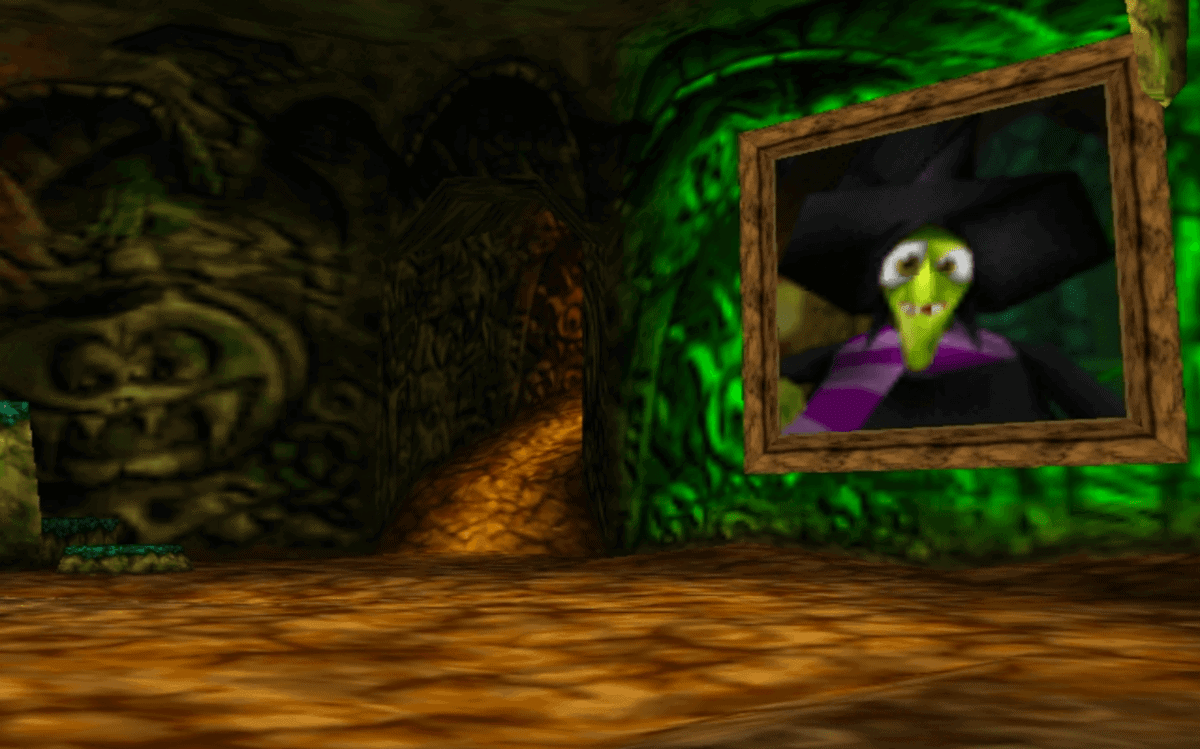
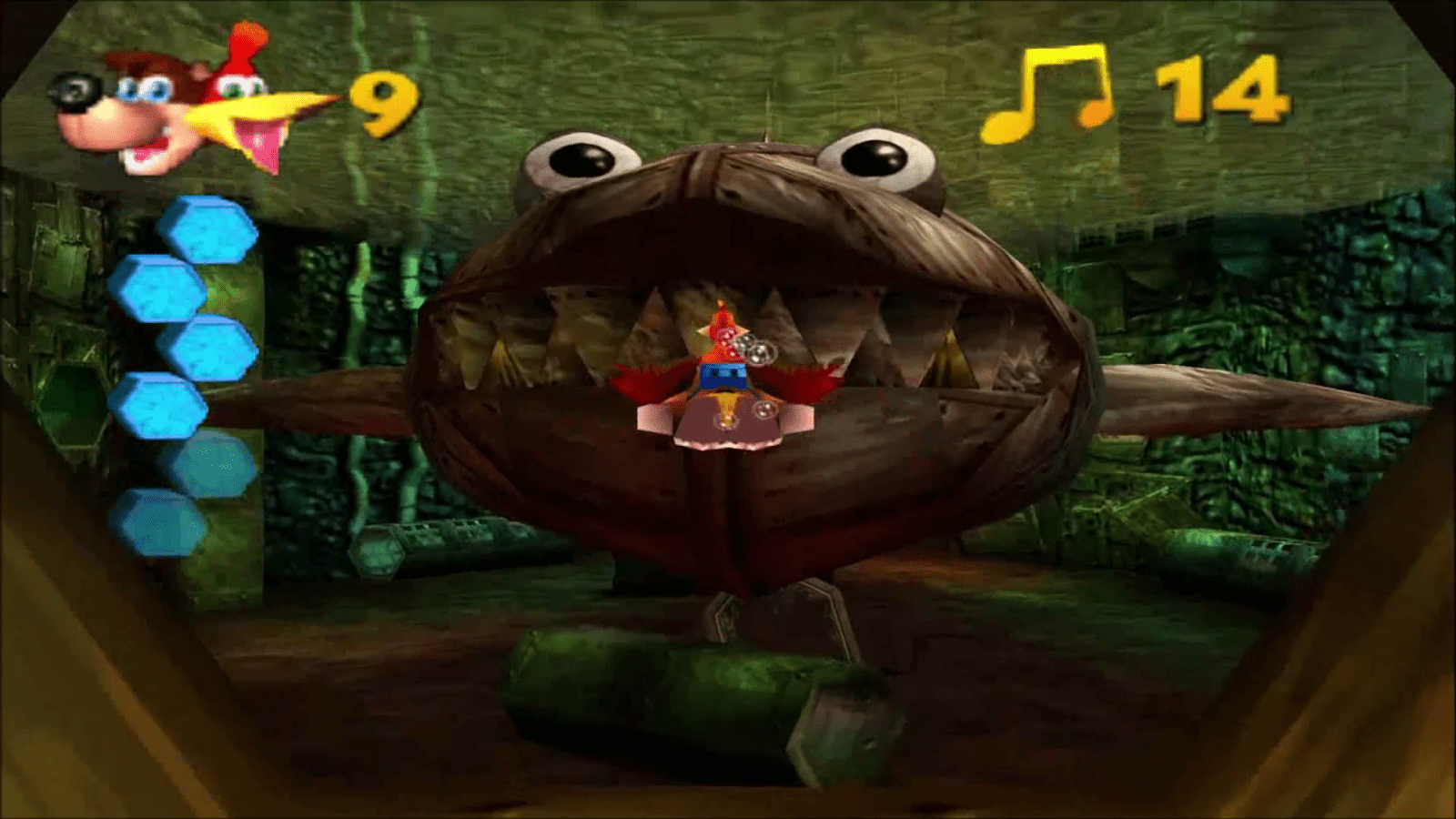
8) Clanker’s Cavern
Water levels on the Nintendo 64 are notoriously frustrating. From the Water Temple in Ocarina of Time to Super Mario 64’s Wet-Dry World / Dry Dry Docks / Jolly Roger Bay – the un-intuitive controls, restrictive camera angles and slow pace can sometimes leach out some of the game’s enjoyment. Clanker’s Cavern is another part of this crowd as Banjo-Kazooie’s main water world. Most worlds in Banjo-Kazooie include water elements in dribs and drabs, but not enough to infuriate. Clanker’s Cavern is 90% water, so you’re almost always swimming. It’s also the winner for the worst colour scheme across all the worlds as everything is a dull, rusted Grey/Brown-ish colour. There are some nice little platform sections around the outer edges, and I do enjoy the moments exploring inside Clanker himself, so it’s not all bad news!
7) Mumbo’s Mountain
Mumbo’s Mountain is the first main world you’ll encounter in Banjo-Kazooie. After completing Spiral Mountain’s tutorial-obvious challenges you can enter Gruntilda’s Lair and find the entrance to Mumbo’s Mountain in the immediate vicinity. Mumbo’s Mountain ticks all the boxes for a ’90s, 3d starter world – grassy terrain, big open spaces and cleverly placed platforming segments to ease you into the game’s mechanics. Mumbo’s Mountain is relatively “safe” in that it doesn’t run with any particular theme, but that doesn’t mean there aren’t some memorable moments. The Termite mound which requires Mumbo’s magic is a particular stand out feature, as is Conga, the orange tossing ape. Mumbo’s Mountain successfully preps the player for further worlds by introducing collectables, such as Jinjos and the 100 notes, which is all wrapped up in a pleasing aesthetic package.
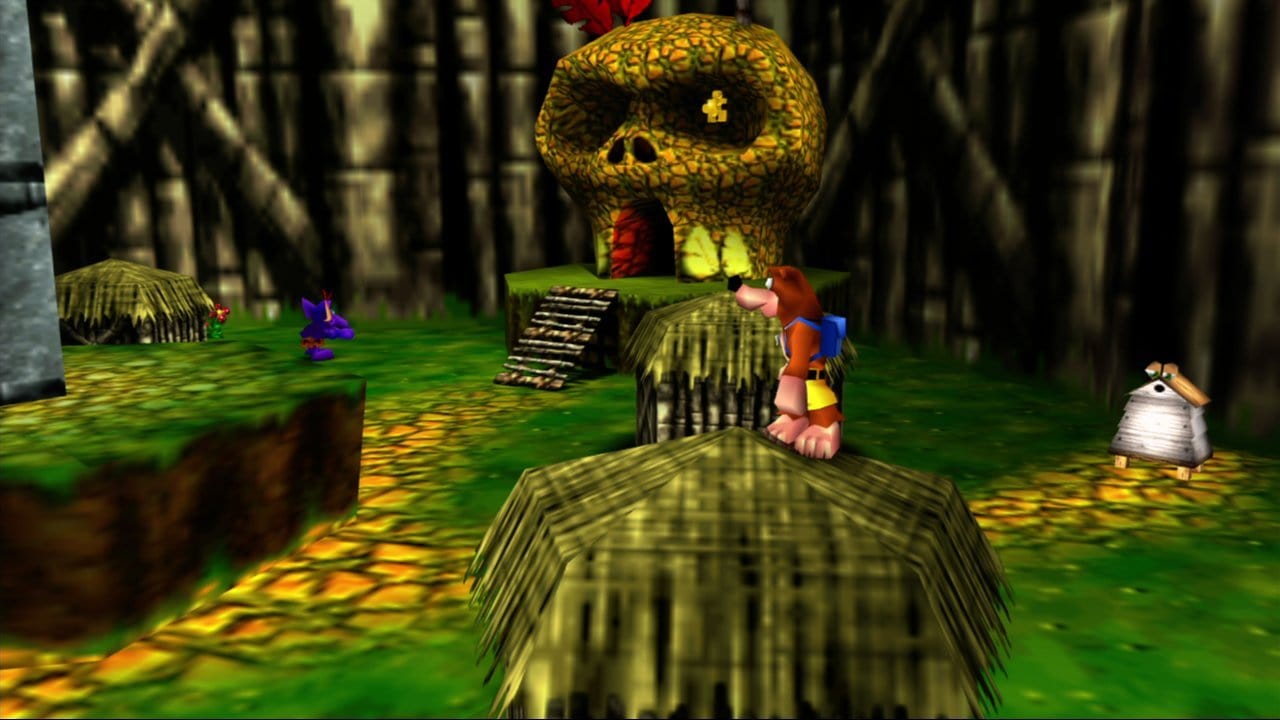

6) Bubblegloop Swamp
Other than the frustrating Mr Vile mini-game, Bubblegloop Swamp has all the makings of a great platforming level. Bubblegloop Swamp is perhaps the most segmented of the worlds, as it’s diced into relatively similar portions. These include a frantic maze that requires the wading boots, a large and breakable egg, and a turtle with cold feet! However, my favourite of the segments is the Treetop Area where you need to use the Shock Jump Pads to climb the continuously rising platforms. There’s a hut donning the top of each platform which you’ll need to break open with the Beak Buster move, eventually leading to the Jiggie on the summit. With the majority of Bubblegloop Swamp being surrounded by piranha-infested waters, you’ll need to tread carefully as you traverse Banjo over some thinner ledges when compared to previous worlds. Bubblegloop Swamp comes in just before the halfway mark, and it’s this continuous piranha-shaped threat, and more precise platforming, that contribute to the elevation of difficulty, which you love to see in a traditional platformer.
5) Mad Monster Mansion
Both Trick and Treat, Mad Monster Mansion is a Halloween lovers’ dream. The world is built around a central mansion that has more secret entrances than I can count on both hands! Break-in through the windows, jump down the chimney, or take the cellar – the choice is yours! Although Mad Monster Mansion looks quite small on the surface, the world is given depth and size via the multiple buildings you can enter. There’s the boarded up and clearly haunted mansion, creepy organ-music filled church, derelict water well and rotten wooden shed. You’d be excused if you mistook that list for an 80’s horror-movie checklist, as the designer in charge of Mad Monster Mansion clearly has a love for the genre. Mad Monster Mansion runs with that horror theme and executes it like a fictional film serial killer executing pretty much everybody.
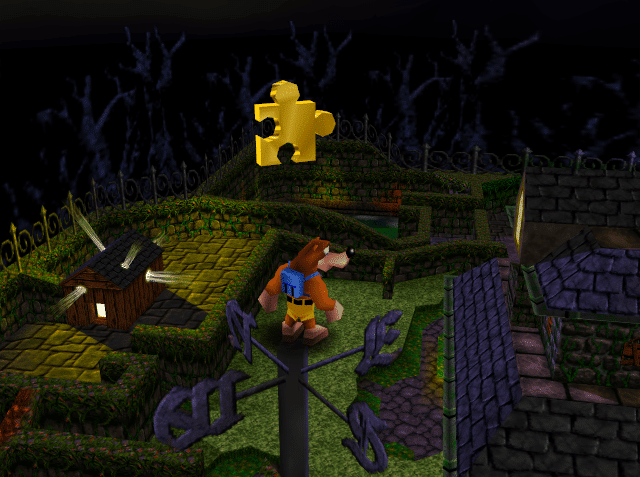
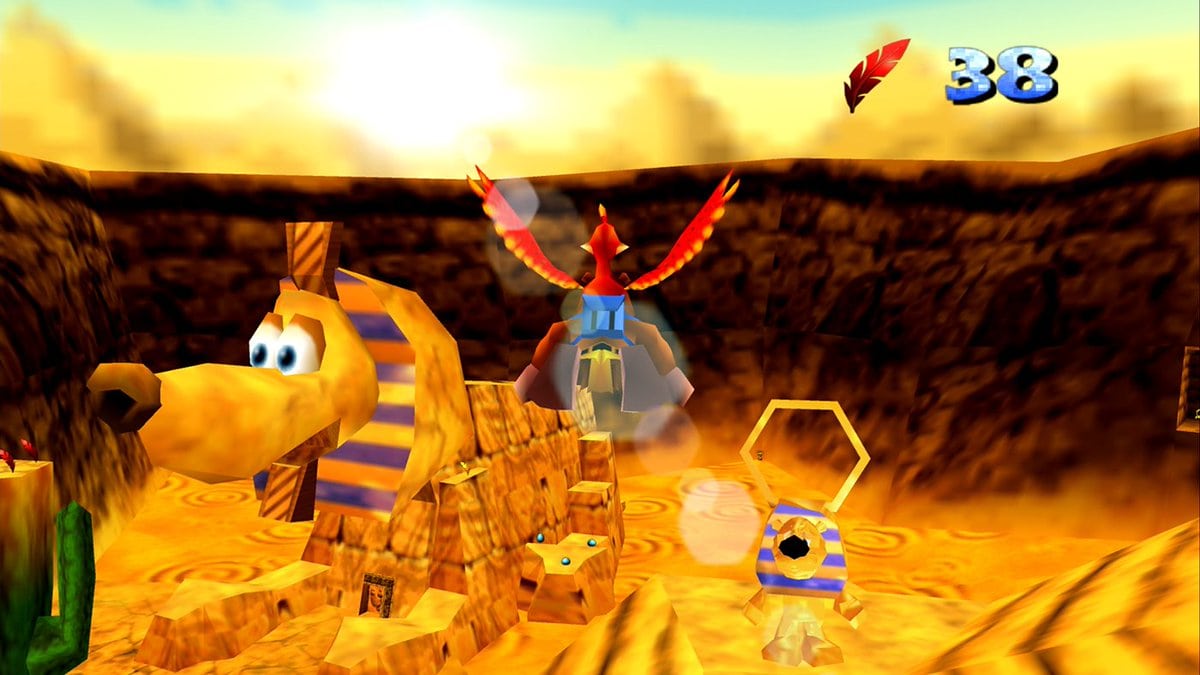
4) Gobi’s Valley
Gobi’s Valley is an Egyptian, desert-inspired platforming romp complete with Sphynx, Magic Carpets and a Snake Charmer. Less subtle than Aladdin, Arabian Nights and The Mummy combined, Gobi’s Valley is made up of a plethora of pyramids for you to explore. King Sandybutt’s Tomb is perhaps my favourite of the pyramids, as you’ll need to make your way through the maze, and to the Jiggie, before the timer runs out – all whilst being chased down by a mummified nuisance. Gobi’s Valley introduces the Turbo Trainers, and whilst they’re used numerous times in this particular world, they’re sadly neglected later on in the game, only making a small number of reappearances. Gobi’s Valley manages to feel like a solid open-world, whilst simultaneously piling on the difficulty through the use of dangerous quicksand and tougher enemies in the Slappa’s and Scabby’s. Although there aren’t too many trickier platforming moments in Gobi’s Valley, the aesthetic, creative Jiggies and Banjo’s exploitation of Gobi, more than makeup for it, resulting in a superb middle-eastern themed world.
3) Freezeezy Peak
Going into Freezeezy Peak, I was nervous. Before Banjo-Kazooie, I’d suffered at the hands of Super Mario 64’s Snowman’s Land, and Ocarina of Time’s Ice Cavern. These both left a bad taste for ice levels – so my stubborn 9-year-old self was prepared to hate Freezeezy Peak right off the bat. But Freezeezy Peak blew me away (much like that Snowman does to Mario…). Not only did Freezeezy Peak impress through its fantastic, open design, but it accomplished this going up against my pre-existing negative expectations – this world started on the backfoot, but ended up towering over me in sheer icy triumph. Freezeezy Peak does away with the slippery ice game mechanic that’s expected and just focuses on great design and a shivering aesthetic. A giant scalable snowman, Lapland-esque village and sleigh race can all be found in this wintery wonderland. Chuck in the adorable Walrus transformation from Mumbo Jumbo which is perhaps my favourite and you’ve got an incredible, icy miracle. The only frustration is the numerous Sir Slush enemies constantly lobbing snowballs at Banjo, which you can’t take out until you learn the Beak Bomb. Once taken out – the problems gone, but without the problem existing in the first place, Freezeezy Peak would undoubtedly be higher.
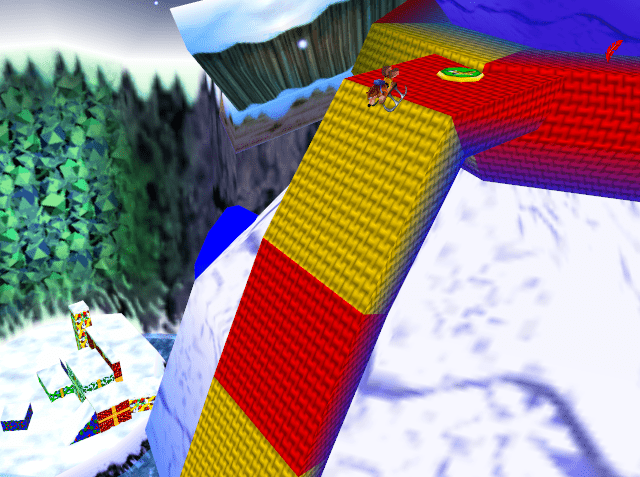
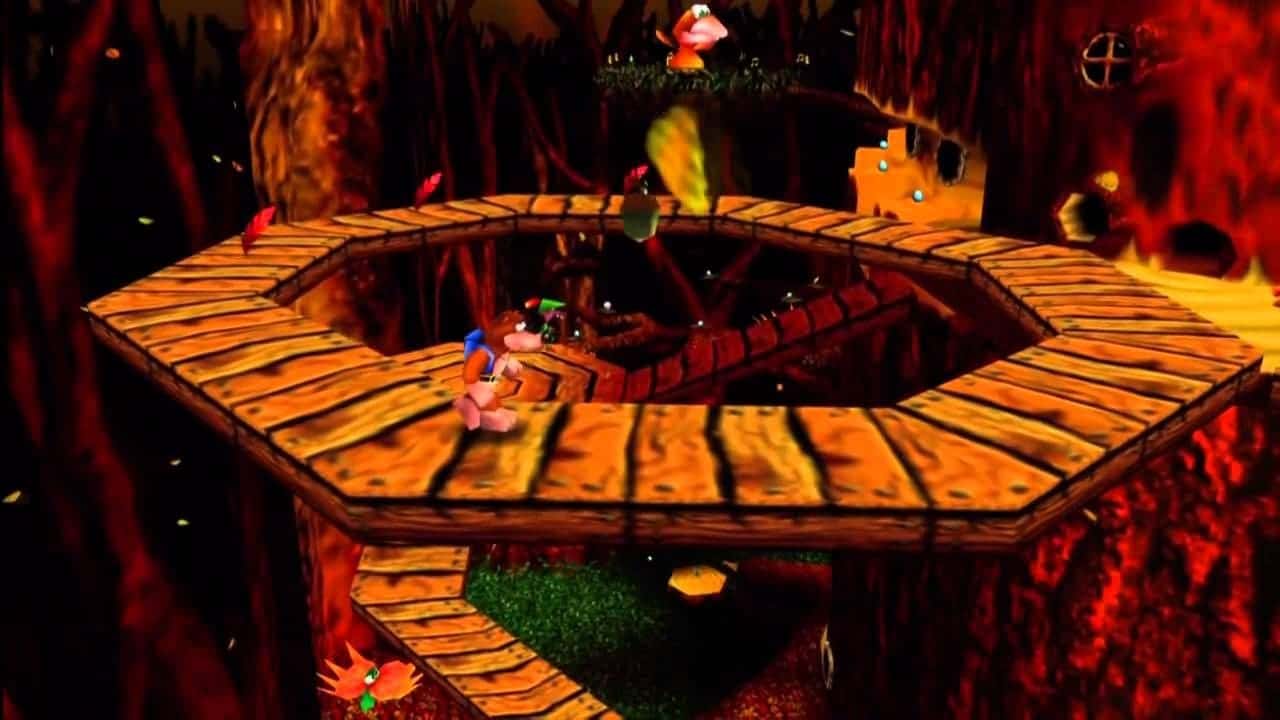
2) Click Clock Wood
Click Clock Wood is a world for bargain hunters – I’m talking four worlds for the price of one…kind of. Click Clock Wood has a unique mechanic in that you can visit the world in each of the four seasons. These seasons are based on typical “British” seasons – so it’s mostly raining in Spring and in Autumn there’s an abundance of orange, red and brown foliage (I’m sure the Aussies were confused by all the snow in the winter version). It’s absolutely genius, as things you do in certain seasons directly affect what happens in the next. You can plant a flower in Spring, only to see it grow and require more water in summer. Whilst your actions affect the different seasons, the seasons get their own back by affecting how you traverse across the world. In summer there are large, luscious leaves you can jump up to climb the central, gigantic tree – but come Autumn the leaves are a third of the size, making using them a risky, near-impossible task. Using seasons in this way isn’t unique to Banjo-Kazooie, but other than perhaps the on-par Oracle of Seasons, I don’t think there’s another video game that pulls this mechanic off better!
1) Treasure Trove Cove
You’ll have read from my Top 10 GameCube Games blog that I’m a fan of that swashbucklin’ pirate life – so it may not surprise you that Treasure Trove Cove is a beauty, eh matey? This Caribbean crusade is complete with a bear-eating shark, Pirate Captain Hippo and angry crab, making it perhaps the most comical world in Banjo-Kazooie. It’s fantastically designed, incorporating an explorable sunken ship, several secluded beaches, and a cliff-face escapade needing some careful timing. Treasure Trove Cove hosts the best new moves too as Kazooie gets full access to the Shock Jump Pad and Flight Pad! Treasure Trove Cove is probably up there as one of the largest worlds in the game, and it’s hugely impressive that it maintains its fluency no matter which direction you take across its open-world setup. It also packs in its fair share of secret nooks – a personal favourite is the cave that leads up to the top of the huge central arch, where you can find a tucked away stereotypical Lighthouse hosting a Jiggie for Banjo’s collection. Treasure Trove Cove is the second level you’ll come across and although everything that follows it is packed with quality (not you Rusty Bucket Bay), they don’t quite shiver me timbers like good ol’ Treasure Trove Cove.
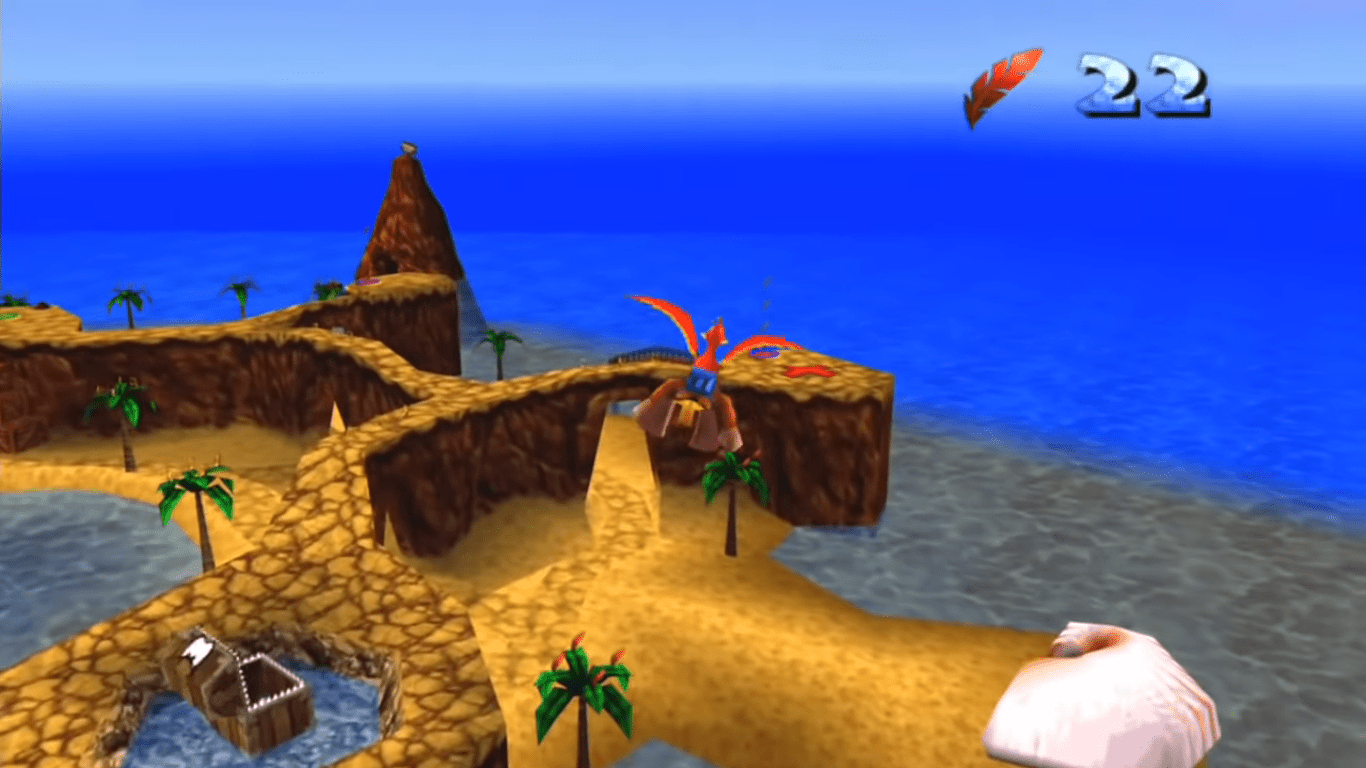
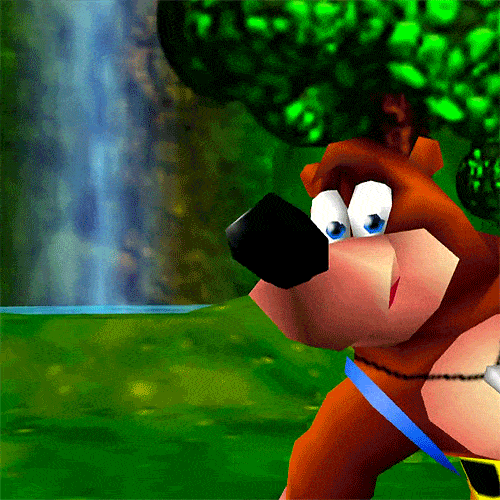
The N64 is home to some absolutely wonderful platformers – games like Super Mario 64, Gex: Enter the Gecko and Donkey Kong 64 all spring to mind. But for me, Banjo Kazooie stands out when it comes to world design and delivery. Back in the 90s, having themes and applying them to a world was pretty common, but Banjo-Kazooie managed to deliver this in a way that was comical, whilst staying true to said theme. Banjo-Kazooie is self-aware, and because of that it can run wild with the theme to the point where it’s almost silly – and in doing this – they ended up creating some of the most memorable and stunning worlds to date!

